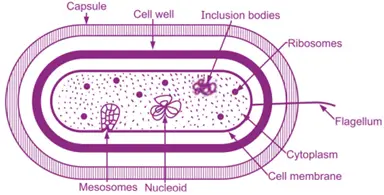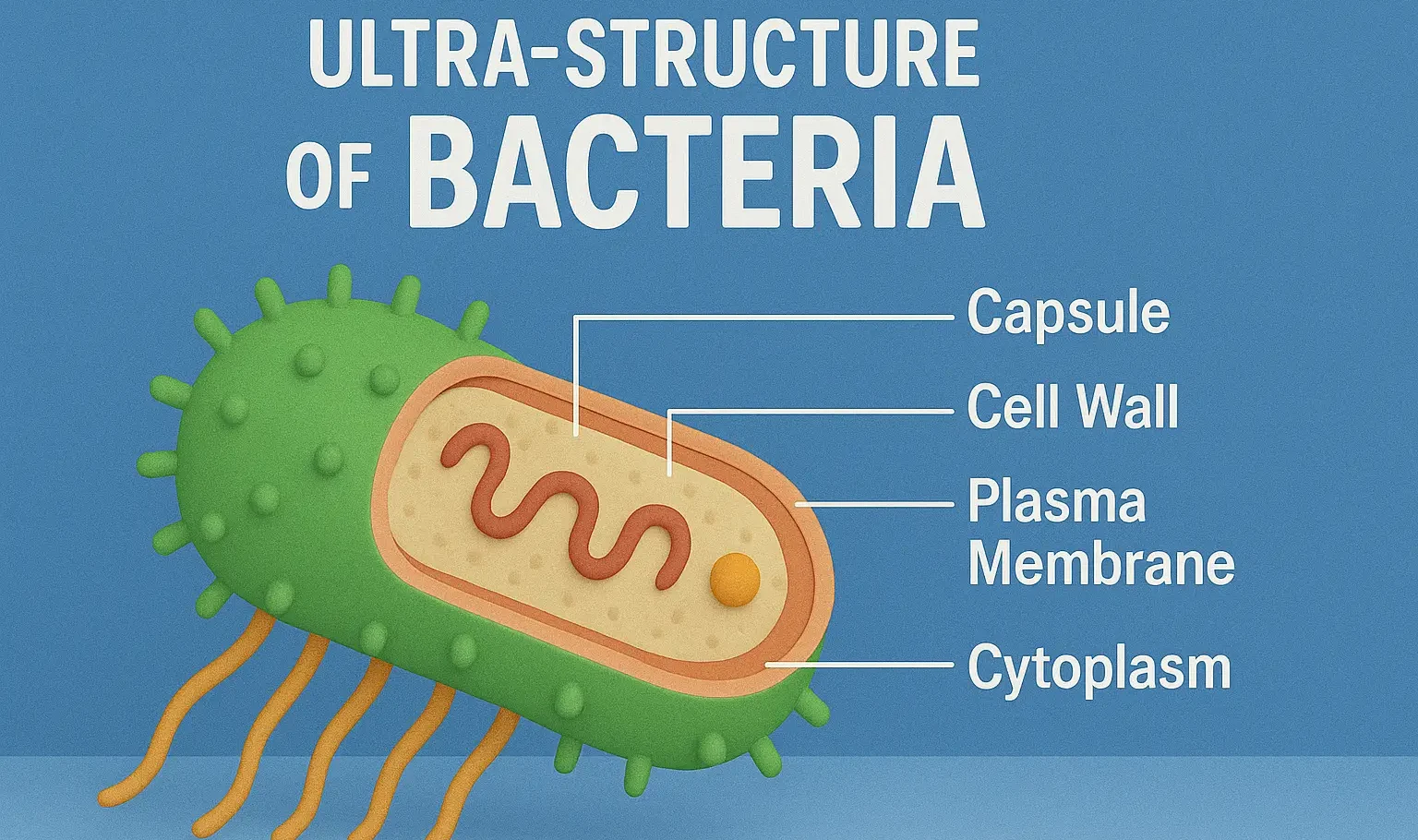Ultra-structure of Bacteria
- Bacteria are single-celled, prokaryotic microorganisms that are found in virtually every environment on Earth.
- They belong to the domain Bacteria, one of the two domains of prokaryotes, the other being Archaea.
- Bacteria are among the earliest forms of life, appearing about 3.5 billion years ago.
- The ultra-structure of bacteria refers to the detailed structure of bacterial cells as observed under an electron microscope.
- This allows for the visualization of cellular components that are not visible with a light microscope.
Importance of Bacteria
-
Ecological Role:
- Bacteria play crucial roles in nutrient cycling, such as nitrogen fixation, decomposition, and bioremediation.
-
Human Health:
- While some bacteria cause diseases, many are beneficial for human health, aiding in digestion and synthesizing essential vitamins.
-
Industrial Applications:
- Bacteria are used in the production of antibiotics, fermentation processes (like yogurt and cheese making), and biotechnology (such as genetic engineering).
This is a sample ad placement!
Key Components of Ultra-structure of Bacteria:

Cell Envelope:
- Cell Wall: Provides shape and protection. Made of peptidoglycan in most bacteria.
- Gram-positive bacteria: Thick peptidoglycan layer with teichoic acids.
- Gram-negative bacteria: Thin peptidoglycan layer, outer membrane with lipopolysaccharides (LPS).
- Cell Membrane (Plasma Membrane): Phospholipid bilayer that controls the passage of substances in and out of the cell.
This is a sample ad placement!
Cytoplasm:
-
- Nucleoid: Region where the bacterial chromosome (circular DNA) is located.
- Ribosomes: Sites of protein synthesis, smaller than eukaryotic ribosomes (70S).
- Plasmids: Small, circular DNA molecules that replicate independently of the chromosome and can carry genes for antibiotic resistance, virulence factors, etc.
- Inclusion Bodies: Storage granules for nutrients, waste products, or other substances.
Surface Structures:
- Capsule: Gelatinous layer outside the cell wall, protects against phagocytosis and desiccation.
- Flagella: Long, whip-like structures used for locomotion.
- Pili (Fimbriae): Hair-like projections used for attachment to surfaces or other cells and in some cases for conjugation (transfer of genetic material between bacteria).
This is a sample ad placement!
Endospores:
- Highly resistant structures formed by some Gram-positive bacteria (e.g., Bacillus, Clostridium) under adverse conditions to ensure survival.
Thank you for reading from Firsthope's notes, don't forget to check YouTube videos!

